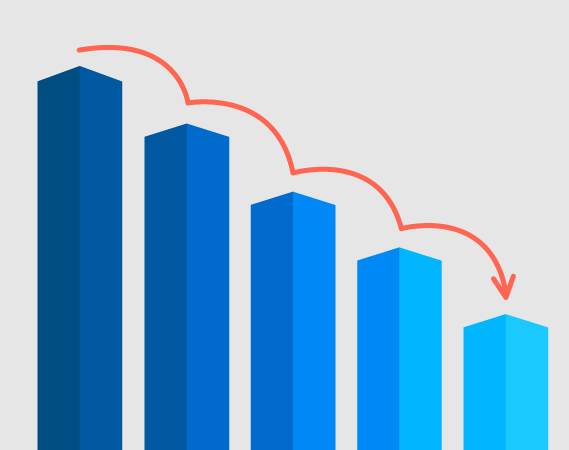Looking for tips to reduce high bounce rate in Google Analytics? This step by step guide will help you in achieving this objective. You need to know what is bounce rate and exit rate clearly before implementing any changes to your website. Implement below points on your website and reduce high bounce rate in Google analytics.
Table of Contents
What is Bounce Rate?
According to Google the definition of bounce rate is “The percentage of visitors to a particular website who navigate away from the site after viewing only one page.”
You can understand the above definition with an example – A user landed on a webpage “A” of your website and he/she didn’t visit any other page of your website. It is called as 100% bounce for page “A”. Similarly 100 users landed on page “A” and only 40 of them viewed other pages “B” or “C” of your website. Than bounce rate of page “A” will be 60%.

What is Exit Rate?
According to Google the definition of exit rate is “Exit rate is the percentage of people who left your site from that page”
Difference Between Bounce Rate and Exit Rate
We can understand it easily with below example.
Let say one user visited pages “A” “B” and “C” on your website on different days of week.
Monday: Page A > Page B > Page C > Exit
Tuesday: Page B > Page A > Exit
Wednesday: Page C > Page A > Page B > Exit
Thursday: Page C > Exit
Friday: Page C > Page B > Page A > Exit
Exit Rate:
Page A: 25% (4 sessions included Page A, 1 session exited from Page A)
Page B: 25% (4 sessions included Page B, 1 sessions exited from Page B)
Page C: 50% (4 sessions included Page C, 2 sessions exited from Page C)
Bounce Rate:
Page A: 0% (one session began with Page A, but that was not a single-page session, so it has no Bounce Rate)
Page B: 0% (one session began with Page B, but that was not a single-page session, so it has no Bounce Rate)
Page C: 100% (one session started with Page C, and it lead to a bounce)
How to Reduce Bounce Rate in Google Analytics
Slow Page Load Time – You should work on page speed as slow pages leads to high bounce rate. You can use Google’s page speed tool to measure your webpage speed.
Analyse Traffic Source and Click Through – It is very important to analyse traffic source of your website. It will give you amazing insights why your users bounced from landing page. To improve it you should read more about landing page optimisation.
Best Landing Page WordPress Themes to Reduce Bounce Rate for your advertising campaigns
Traffic from SERP’s (Search Engine Result Pages) – Analyse Title, Meta description and search snippets of your page for search keywords. “Search keywords” matrix is very important which you can get from Google’s search console. If the title and meta description is not as clear and appropriate as it should. Users surely will going to be bounced.
Traffic From Social Media Websites – Analyse the source social post, edit or improve it for fruitful results.
Traffic From Referral Websites – Analyse page content, anchor text, image link or any other citation to improve relevance.
Too Many Advertisements – Too many advertisements and banners leads to high bounce rate.
Avoid Unnecessary Popups – Avoid unnecessary popups on pages. It irritates visitors.
Increase Page Relevancy, Quality Content and Optimise Landing Page – Many marketers, and businesses fail in the business of writing quality-filled and helpful content.
Be Sure and Work on Website Objectives – It is time to rethink on your website objective. Refer different types of website objectives and goals according to your website. Write content, make stories around the objectives of your website.
Work More on User Engagement – If you start working on user engagement your website’s bounce rate will be automatically reduced.

